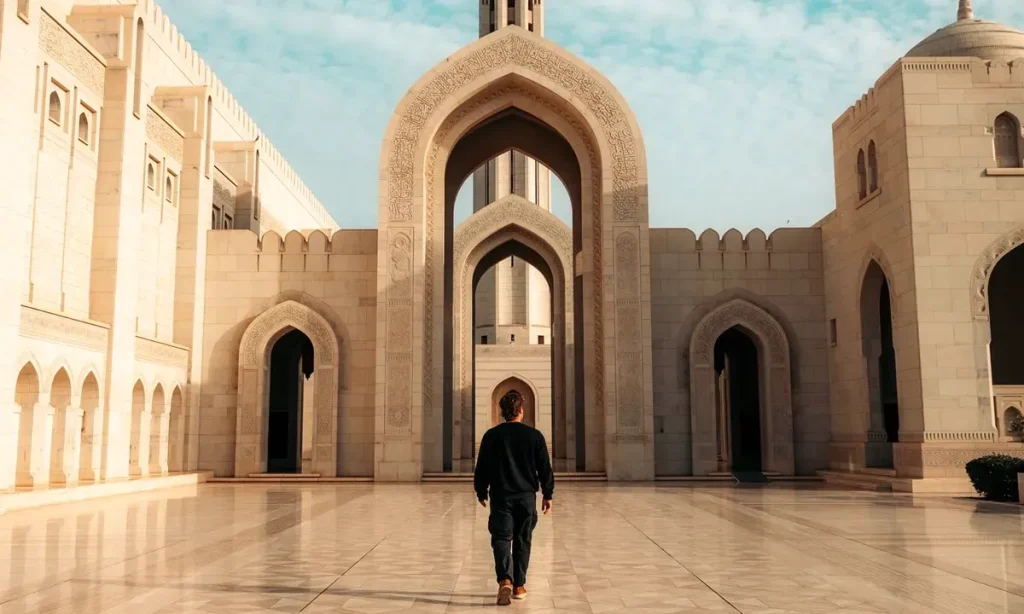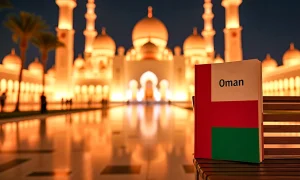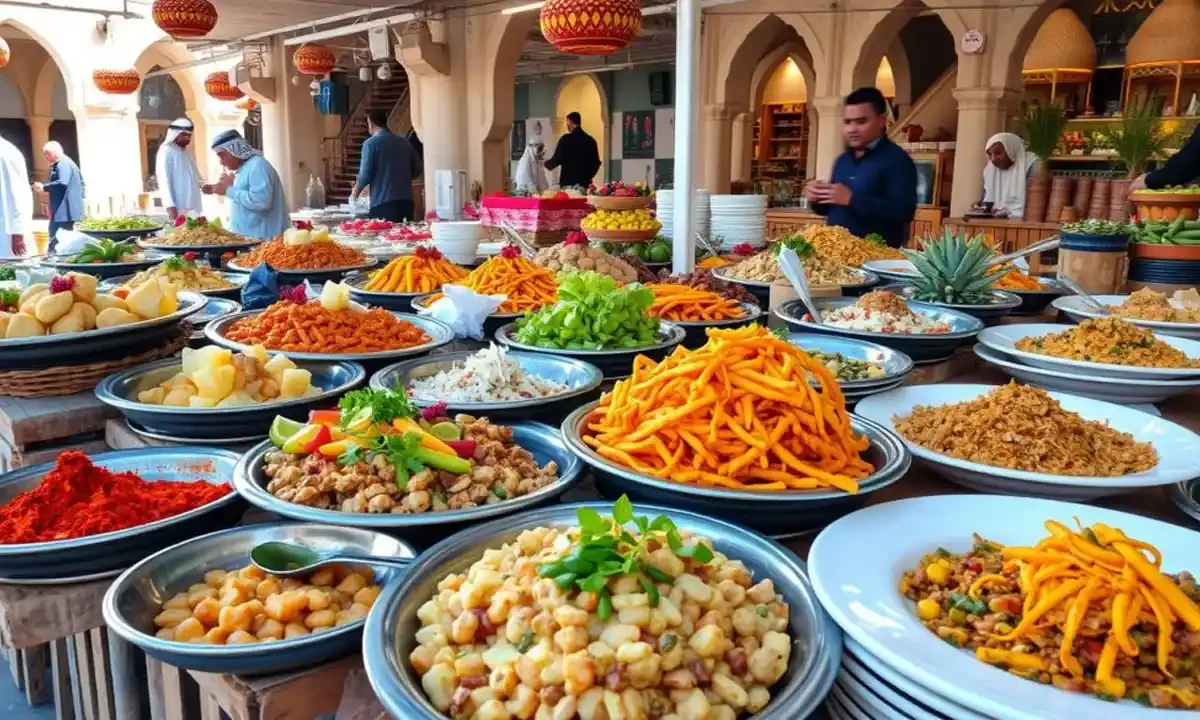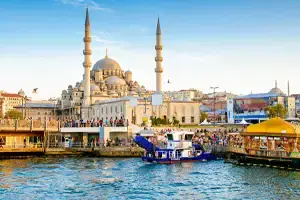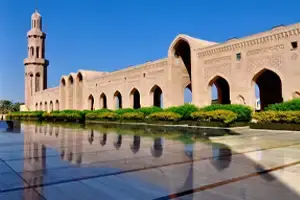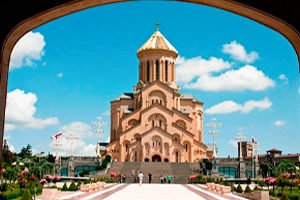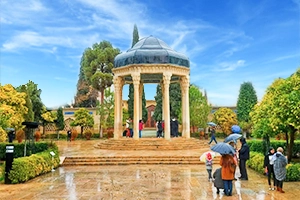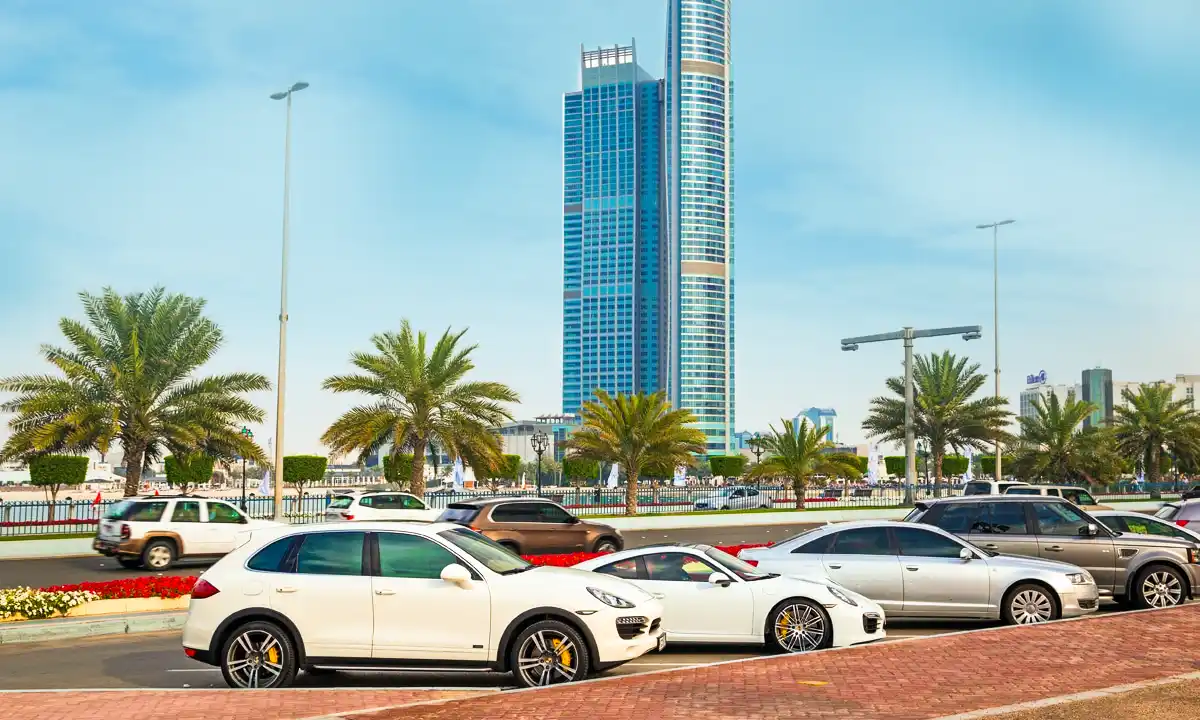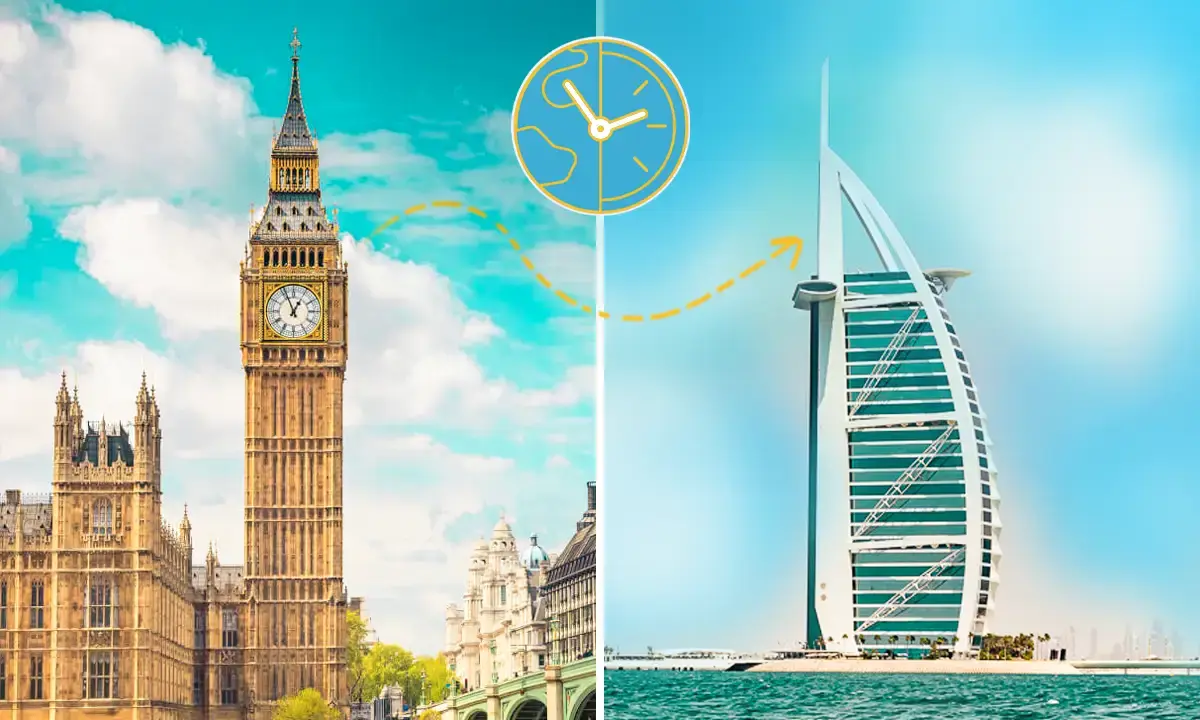Sultan Qaboos Mosque is the largest religious site in the country, accommodating more than 20,000 worshippers. This national landmark is the symbol of Oman and a must-see destination for every tourist. So, if you’re planning on visiting Muscat, make sure you check out the Oman Grand Mosque.
In this article, we will check out the history behind it, practical tips on visiting Sultan Qaboos Mosque, and some fun facts. So, buckle up, people! Let’s delve into this magnificent building and answer once and for all: What is breathtaking about the Sultan Qaboos Mosque?
The History Behind Sultan Qaboos Mosque
In the 90s, Sultan Qaboos bin Said Al Said dreamed of building a grand landmark that would become the heart and symbol of Oman, something for the Omani people to look at and think, “What a gorgeous building Sultan Qaboos has given us that best captures the grandeur and heritage of our nation, I’m proud to be an Omani!” So he conceived of the Oman grand mosque, and thus, the project started.
Starting the Project
In 1992, Sultan Qaboos announced a national competition to design the central landmark of Oman. The plan was to embody the Islamic and cultural heritage of Oman with modern engineering. Ultimately, the architectural firm of Dr. Mohammad Saleh Al-Saadi, an Omani architect, won the competition.
Construction
The construction officially began in 1995. Thousands of workers and artisans from all over the world worked for six years to complete the Sultan Qaboos Mosque. And the result? Arguably the most awe-inspiring Islamic site in the region. The obsessive attention to detail combined with an idealistic manner will take your breath away.
Opening
The Sultan Qaboos Mosque was officially opened to the public in May 2001. It also celebrated 30 years of Sultan Qaboos’s reign in Oman. And now, it is part of every Omani’s identity and among every tourists’ top Oman attractions.
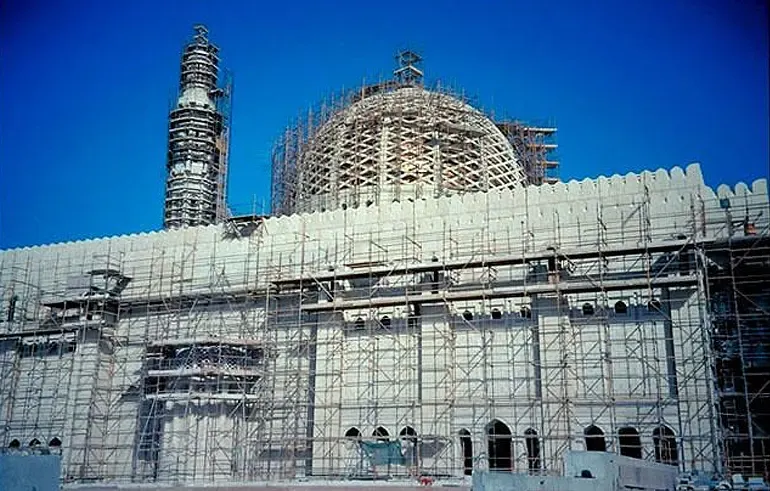
How to Get to Sultan Qaboos Mosque?
Now that we have a general background of the Sultan Qaboos Mosque, let’s discuss its location and how to get there.
First, check out this map:
As you can see, the Sultan Qaboos Mosque is situated in the Bawshar district. If you’re new to Muscat, let me tell you that Bawshar is one of the most significant and vibrant districts. Besides, it is also easily accessible from Oman’s highway system through Muscat’s main road. This road is also named after, you guessed it, Sultan Qaboos!
Public transportation in Muscat might be a bit underwhelming, so do not rely solely on it. Taxis and private rides are better options for visiting Sultan Qaboos Mosque. However, we think the ultimate answer to freely exploring Muscat is renting a car. You’ll drive independently and avoid the endless costs of taxi rides.
Preferably, rent a car at the Muscat Airport. The Sultan Qaboos Mosque is only a 15-minute drive away. Plus, you can easily access it from Muscat’s city center in less than 20 minutes. Besides, you can rent a car from Dubai to Oman if you’re visiting both of these destinations.
Check out this table to review different ways you can visit Sultan Qaboos Mosque:
| Method | Pros | Cons | Costs |
|---|---|---|---|
| Taxi/Private Car | - Convenient and fast - Comfortable - Door-to-door service |
- Can be expensive - Traffic may cause delays |
- OMR 3-5 ($8-$13 USD) from city center to the mosque - Higher fares in peak hours or traffic |
| Rental Car | - Flexibility to explore at your own pace - Comfortable - Convenient for groups |
- Requires driving in a foreign city - Parking might be limited |
- OMR 15-25/day ($40-$65 USD) depending on car type - Fuel costs and insurance might be extra |
| Bus | - Affordable - Environmentally friendly |
- May be slow and less convenient - Limited public transport options |
- OMR 0.5-1 ($1.30-$2.60 USD) for a one-way fare |
| Hotel Shuttle | - Convenient if available - Often free or low-cost |
- Not all hotels offer this service - May have fixed schedules |
- OMR 0-5 ($0-$13 USD) depending on the hotel service fee |
| Walking | - Free - Healthy and scenic (if staying nearby) |
- Only practical if you're staying nearby - May be tiring in hot weather |
- Free if within walking distance - Costs may arise if you need a drink or rest during the walk |
| Guided Tour | - Hassle-free - Includes transportation and a guide |
- May be more expensive than solo transport - Fixed schedule |
- OMR 20-50 ($50-$130 USD) per person, depending on the tour package |
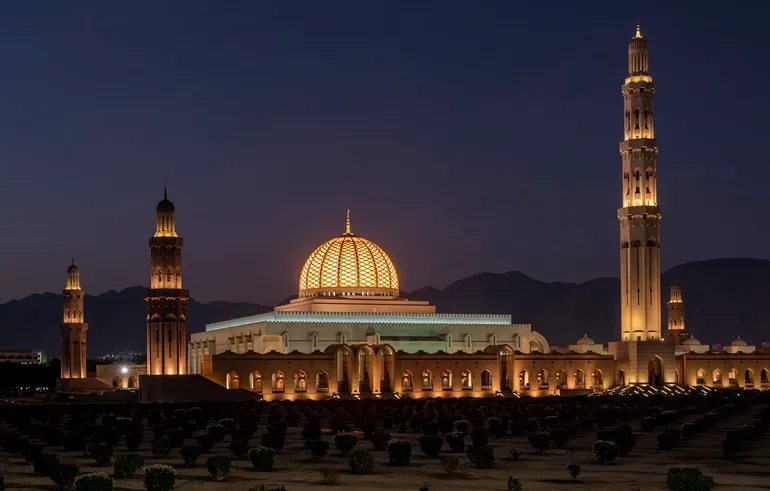
Must-Know Tips for Visiting Sultan Qaboos Mosque
Alright adventurous Oman-lovers! We just arrived at the Sultan Qaboos Grand Mosque. A holy site that spans over 416,000 square meters. It will leave such an impression. But before we get blown away by the majestic mosque, there are a couple of guidelines and tips we must know. So make sure you check out this section first, especially if you’re wondering, “Oman’s weather isn’t that Hijab-friendly, so why don’t I just remove it?!”
Sultan Qaboos Grand Mosque Tickets
- Entry to the Mosque is free for all visitors.
- There is no need to purchase tickets to visit the mosque, as it is open to the public.
- However, if you want a guided tour, it’s best to inquire with the mosque’s visitor center or check with your hotel for tour operators.
Timings and Opening Hours of the Oman Grand Mosque
- General Opening Hours: The mosque is open to visitors every day of the week.
- Saturday to Thursday: 8:30 AM to 11:00 AM
- Friday: Closed to visitors (due to Friday prayers)
Does Visiting the Sultan Qaboos Grand Mosque Require an Entry Fee?
As mentioned earlier, there is no entry fee to visit the Sultan Qaboos Grand Mosque. It is free for all guests. So don’t cancel your Sultan Qaboos Mosque tour just because you’re having a budget trip to Oman.
Sultan Qaboos Mosque Prayer Times
The mosque is an active place of worship, so it follows regular Islamic prayer times. During these prayer sessions, the mosque is reserved for worshippers, and visitors are expected to respect the sacredness of these moments.
So when are these prayer times?
- Fajr (dawn): Early morning, before sunrise
- Dhuhr (midday): Around noon
- Asr (afternoon): Mid-afternoon
- Maghrib (sunset): Just after sunset
- Isha (night): Late evening
During these five times of the day, visitors aren’t allowed.
Sultan Qaboos Mosque Dress Code
- Strict Dress Code for Visitors: Since the Sultan Qaboos Grand Mosque is a religious site, there is a strict dress code that all visitors must follow:
- For Women: Women should wear a modest, long-sleeved top and long skirt or pants. A headscarf (hijab) is also required to cover the hair.
- For Men: Men should wear long pants (no shorts) and avoid wearing sleeveless shirts.

Sultan Qaboos Mosque Parking
Available Parking: The Sultan Qaboos Grand Mosque provides ample parking spaces for visitors. There is a large parking lot just outside the mosque, making it convenient for those driving.
And the good news is that the mosque offers free parking for all visitors. However, the parking lot can fill up during busy times (especially on weekends). So, just like the wise say, the early bird catches the worm, the early tourist catches the free parking!
Other Guidelines
- Children under ten cannot enter the main praying hall.
- Eating or sleeping is permitted inside the mosque.
- Using a cell phone is permitted in the main praying hall.
The Unique Architecture of the Sultan Qaboos Mosque
Let’s quickly review the unique characteristics of the Sultan Qaboos Mosque and its overall design.
The Mosque’s Main Parts
This iconic site is massive. It spans over 416,000 square meters and can accommodate up to 20,000 worshipers. It consists of:
- The main praying hall: A square-shaped hall (musallah) that covers approximately 4,200 square meters and accommodates up to 6,500 prayers.
- A second praying hall for women: a second praying hall reserved only for women that has a capacity of 750 prayers.
- The central dome: Located right in the middle of the praying hall. The dome is made from a mix of concrete and steel and is finished with beautifully intricate decorative patterns that reflect classical Islamic craftsmanship.
- Five minarets: They are the symbol of the five pillars of Islam. Four minarets are located on the four corners of the building. The fifth or the main minaret is the tallest one.
- Courtyards and Corridors
- The surrounding gardens and paved area: This area can accommodate over 8,000 worshipers. Mixed with the courtyards and corridors, the Sultan Qaboos can accommodate over 20,000 worshipers.

The Overall Design
The mosque was designed by the Mohammed Saleh Makiya architectural firm. They wanted the Oman grand mosque to have a cultural yet modern look. They managed to capture the Islamic traditions by utilizing Omani architectural style with a blend of Persian and Ottoman styles. And to give it a modern look, they decided to go with a minimalistic design. That’s why you can see similarities between the Sultan Qaboos Grand Mosque and famous grand mosques in Iran or the Ayasofia in Istanbul.
For instance, the Persians are the masters of tilework and calligraphy. And you can clearly see their influence in this mosque’s intricate tileworks and decorative courses of the Quran.
On the other hand, the Sultan Qaboos Grand Mosque has five minarets with four of them on the four sides of the building. This style is reminiscent of Ottoman-style architecture. Most of the mosques in Iran and other surrounding countries have only one or two minarets. Besides, the usage of natural light is something seen in the Byzantine and later Ottoman architecture.
Lastly, to highlight the simple and minimalist design of the mosque, we can mention the entrance arch. In most Iranian mosques, the entrance arch is covered with complex patterns of tilework. Whereas in Sultan Qaboos Mosque, the entrance has a simple arch, simple yet beautiful.
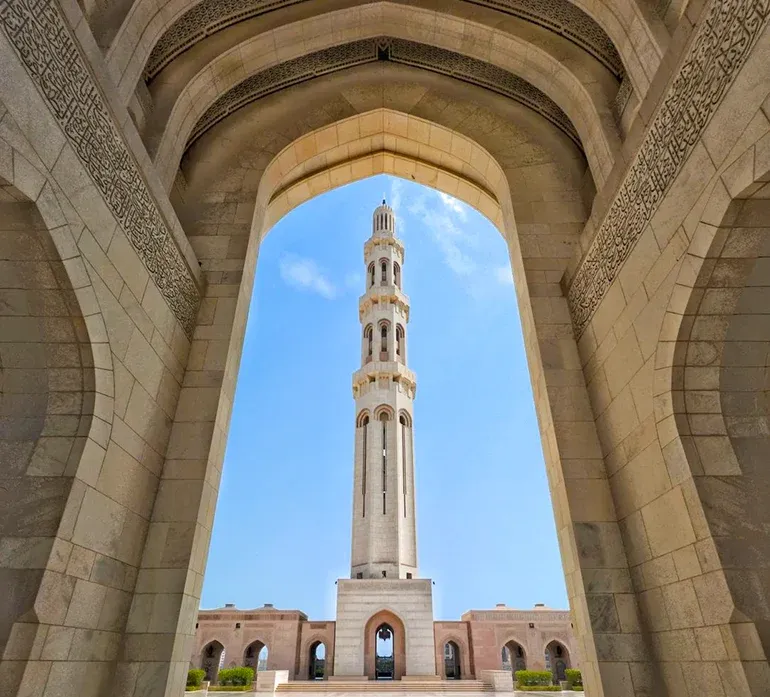
The Material Used to Construct the Sultan Qaboos Mosque
The most prominent material used in building the Sultan Qaboos Mosque is limestone. Therefore, you get the mosque’s white look, which gives it an elegant impression. Besides, limestone is a local material found in Oman and endures the harsh climate there.
The limestone is beautiful and sleek, but Sultan Qaboos wanted his mosque to be perfect. So they used top-level Italian marble for the floors. And made the mosque even more majestic.
Woods are the other interesting feature of the Oman grand mosque. Their contrasting color and texture give an exciting look to the internal design of the mosque’s roofs. Plus, they leave room for more decorative woodcarvings.

Fun Facts about the Sultan Qaboos Mosque
Now it’s time to take a look at some of the wonders of the Oman grand mosque. But before we give you a list of Sulta Qaboos Mosque’s world records or fun facts, why not make things a bit more exciting? We gathered a little game here that you can play. Take this little quiz. Let us know in the comments how many right answers you got!
Yes! In fact, the main praying hall’s carpet is three times heavier than an elephant. This 21-ton carpet is the second-largest hand-woven carpet in the world. The carpet measures over 70 by 60 metres and covers an area of 4,343 square meters.
Again, Yes! We picked another world record that this mosque holds! The chandelier that hangs from the central dome is the second-largest in the world. It is almost 8.5 tons, which outweighs a medium-sized yellow school bus. This gigantic chandelier has a dazzling number of 1,122 halogen bulbs and 600,000 crystals.
Okay, this question was a tricky one! No, the knots in Sultan Qaboos Mosque’s carpet don’t outnumber the people on Earth. However, there are still a mind-boggling number of 1.7 billion knots in the mosque’s carpet. A hundred years ago, it would have been more than Earth’s population.
It took the hard work of around 600 workers for four years to weave this carpet.
Yes! The Pantheon’s dome in Rome has been the largest in the world for 1300 years. But no matter how gigantic it is, it’s not as big as Sultan Qaboos Mosque’s dome. Pantheon’s dome has a diameter of 43 meters. Whereas, the Oman grand mosque’s dome has a diameter of 50 meters. It has one of the largest domes in the Islamic world.
No, not all of the minarets are taller than Notre Dame. Notre Dame towers are 69 meters tall, and the four shorter minarets of Sultan Qaboos Mosque are 45 meters tall. However, the tallest minaret surpasses Notre Dame in Paris with an outstanding height of 91 meters.
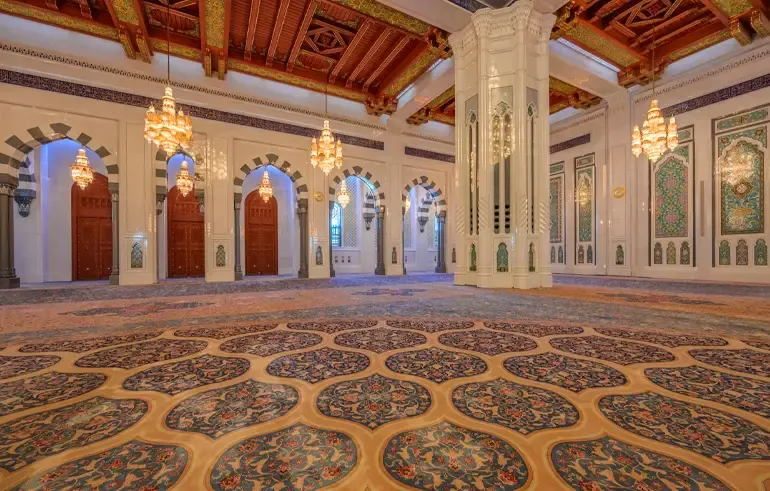
Last Word
Together, we looked at one of the most iconic landmarks of Oman. Sultan Qaboos Mosque is a marvelous gift that the former Sultan of Oman has given to his nation. And forever, it will show the history and grandeur of the Omani people.
We reviewed its history, architecture, and some fun facts about the Oman grand mosque. And for all of you travelers in Oman, we listed the must-know tips. Dress modestly, respect the guidelines, and don’t forget to enjoy this fascinating site! Visiting Sultan Qaboos Mosque will be the highlight of your Oman trip.
FAQ
What is special about Sultan Qaboos Grand Mosque?
This mosque is an iconic landmark and the symbol of Oman. It is also one of the largest mosques in the region and an architectural masterpiece.
What is the second-largest carpet in the world?
The second-largest carpet is inside the Sultan Qaboos Mosque’s main prayer hall. It measures an astounding 60 by 70 meters.
Who built the Sultan Qaboos mosque?
The construction of the Oman grand mosque was initiated under the direct order of the former sultan of the country, Qaboos bin Said Al Said back in the 1996.
Which mosque has the biggest chandelier?
The Sultan Qaboos Mosque in Oman has the biggest chandelier in the world. Hanging from the main dome, this chandelier weighs over 8.5 tons.
How old is Sultan Qaboos Grand Mosque?
It was officially opened on May 4, 2001, making it more than 20 years old.
What should you wear to the Sultan Qaboos Mosque?
You should follow the Islamic dress guidelines. Men should wear long-sleeved shirts and cover their knees and legs. Women should wear the hijab as well. It means they should cover their head and hair.
